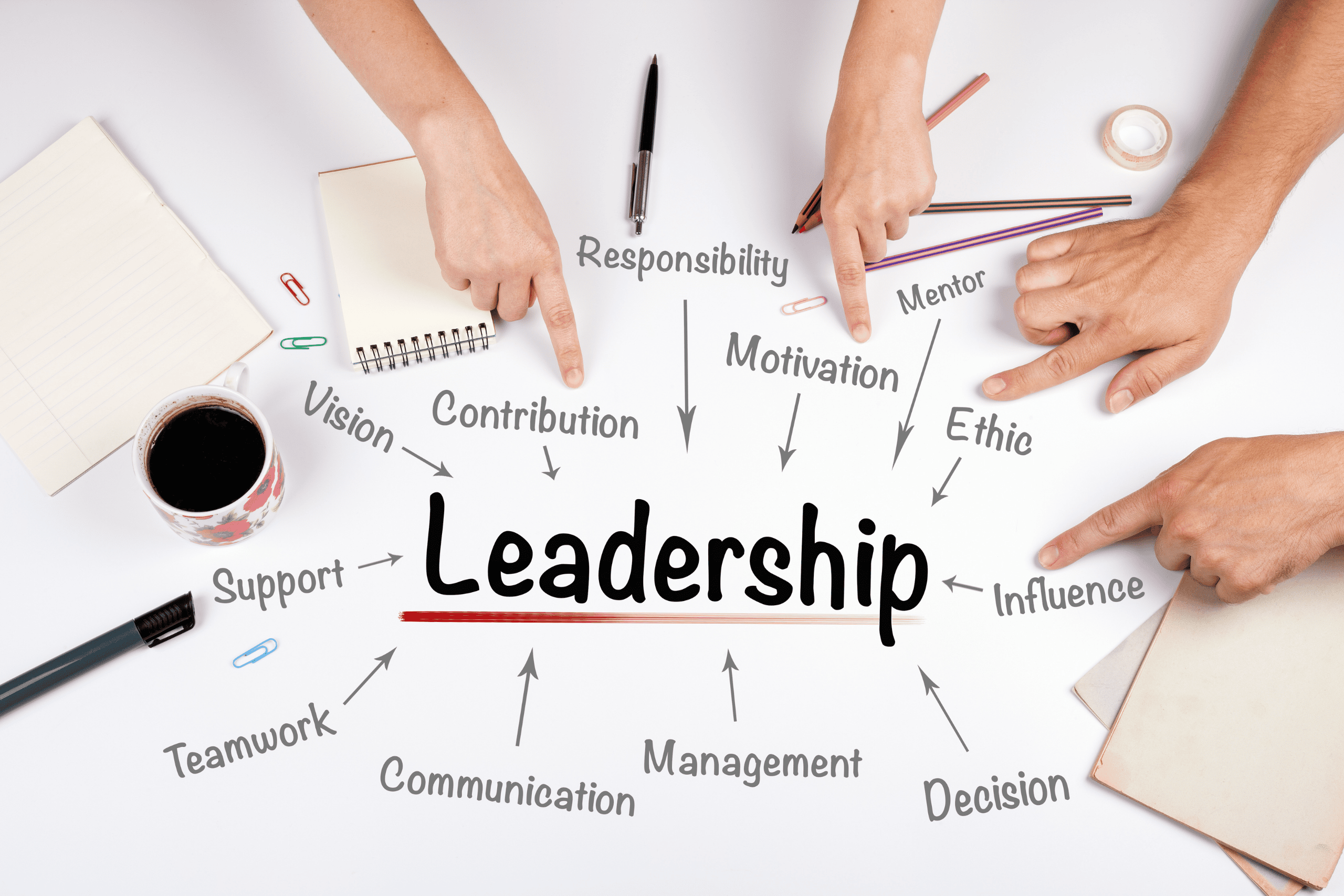
Transitioning into Leadership Roles: A Comprehensive Guide
People step into leadership roles in different ways—some work their way up through years of dedication, others are recognized for their exceptional skills, and some find themselves in leadership due to external influences. I once read the story of a man who had little experience in business management but was appointed as the head of a major company due to his family’s connections. Despite his prestigious new role, he struggled with decision-making, team dynamics, and strategic planning because he lacked the necessary leadership skills. His transition was overwhelming, and without proper guidance, he risked failing both himself and the organization.
Transitioning into a leadership role is a pivotal moment in one’s career, presenting both opportunities and challenges. Whether you’re stepping into a managerial position for the first time or advancing to a higher executive role, understanding the dynamics of leadership transition is crucial for success. This guide delves into strategies, expert opinions, and real-world examples to help you navigate this journey effectively.
Understanding the Challenges of Leadership Transitions
Leadership transitions can be overwhelming. A study by DDI found that more than one-third of leaders described their transition into leadership roles as overwhelming or very stressful. This stress can lead to burnout, with 37% of leaders reporting feeling exhausted at the end of each day. The same study highlighted that leaders who experienced high-stress transitions were more likely to consider quitting and had lower confidence levels in their leadership abilities (prnewswire.com).
Additionally, transitioning leaders often face challenges such as imposter syndrome, lack of clarity in their new responsibilities, and difficulty in gaining team trust. New leaders may struggle to establish authority while fostering collaboration, which can lead to strained team dynamics. To navigate these hurdles successfully, leaders must adopt a proactive and strategic approach.
Strategies for a Successful Transition
Immerse Yourself in the New Role
Take the time to understand the organization’s culture, values, and dynamics. Engage with team members, stakeholders, and predecessors to gain insights into existing processes and areas for improvement. Ibrahima Souare, who succeeded Ken Inadomi as executive director at NYPACE, emphasized the importance of mentorship and observation to build strong relationships and understand the organization’s dynamics (nypost.com).
Set Clear Aspirations and Goals
Define a clear vision for your leadership. Collaborate with your team to set achievable goals that align with the organization’s objectives. McKinsey & Company suggests that new leaders should focus on five basic dimensions: aspire, assess, architect, act, and advance. By following this framework, leaders can effectively navigate their transition (mckinsey.com).
Leverage Existing Strengths While Implementing Change
Respect the legacy of your predecessor while introducing your unique vision. Overhauling systems abruptly can lead to resistance, so balance is key. Identify areas where new initiatives can complement existing processes. Experts advise over-communication and adding new elements rather than immediately changing existing ones. Implementing structured change management can lead to successful transitions (nypost.com).
Cultivate Essential Leadership Qualities
- Develop Strong Communication Skills: Effective leadership hinges on clear, concise, and empathetic communication. Hone your active listening skills, practice articulating your vision, and master the art of giving and receiving feedback constructively.
- Foster Emotional Intelligence: Understand and manage your own emotions while empathizing with and connecting with the emotions of your team members.
- Build Trust and Credibility: Demonstrate integrity, honesty, and transparency in all your interactions.
- Embrace Continuous Learning: Stay updated on industry trends, develop new skills, and seek opportunities for professional development.
- Develop Strategic Thinking: Cultivate the ability to anticipate future challenges and develop effective plans.
- Master Delegation and Empowerment: Learn to delegate effectively, empowering your team members to take ownership of their work.
- Foster Collaboration and Teamwork: Create an inclusive work environment where team members feel valued and motivated to collaborate.
- Drive Innovation and Change: Encourage creativity and guide your team through change and transformation.
Seek Feedback and Continuous Learning
Establish channels for open communication where team members feel comfortable providing feedback. Engage in continuous learning through workshops, seminars, and mentorship to refine your leadership skills. Laura Empson, a professor with extensive experience in studying professional organizations, emphasizes the importance of understanding existing organizational dynamics and avoiding arrogance. Implementing quick wins can also help build credibility (ft.com).
Building a Supportive Network
Surround yourself with mentors and peers who can offer guidance and support. A strong network provides diverse perspectives and can be invaluable during challenging times. Tom Nguyen, a former artillery officer turned business consultant, credits his military experience and the support of programs like the Veteran Employment Program (VEP) for his successful transition into business leadership (theaustralian.com.au).
Expert Insights on Leadership Transitions
The Financial Times highlights the importance of establishing legitimacy and understanding organizational politics during transitions. New leaders should navigate internal dynamics carefully, identify key players, and balance immediate action with periods of listening and learning (ft.com).
McKinsey & Company emphasizes the significance of focusing on five dimensions during transitions: aspire, assess, architect, act, and advance. By concentrating on these areas, leaders can effectively manage their transition and drive organizational success (mckinsey.com).
Real-World Examples of Leadership Transitions
Ryan Seacrest’s Transition on “Wheel of Fortune”
When Ryan Seacrest replaced Pat Sajak as host of “Wheel of Fortune,” he thoroughly prepared by studying the show’s nuances. This preparation allowed him to respect the show’s legacy while bringing his unique style to the role (nypost.com).
Corporate Leadership Evolution
The concept of C-suite leadership is evolving, with new roles such as Chief Transformation Officer and Chief Experience Officer emerging to drive innovation. This shift reflects the need for leaders to embrace collective genius, foster innovation, and continuously upskill employees to stay competitive (businessinsider.com).
Embracing Challenges and Learning from Setbacks
- Develop Resilience: Leadership requires resilience. Embrace challenges as opportunities for growth and learning.
- Seek Feedback: Actively solicit feedback from team members, supervisors, and mentors to identify areas for improvement.
- Stay Positive and Persistent: Maintain a positive attitude and persevere through setbacks. Leadership is a journey of continuous learning and growth.
Conclusion
Transitioning into a leadership role is a multifaceted journey that requires self-awareness, strategic planning, and adaptability. By immersing yourself in the organization’s culture, setting clear goals, leveraging existing strengths, seeking continuous feedback, and building a supportive network, you can navigate this transition successfully. Effective leadership is not about immediate perfection but about continuous growth and fostering a collaborative environment.
References
- DDI. “Stressful Transitions Are Setting Leaders Up for Failure, According to New DDI Study.” prnewswire.com.
- McKinsey & Company. “How to get leadership transition right.” mckinsey.com.
- Financial Times. “Leadership Transitions and Organizational Politics.” ft.com.
- Business Insider. “The Changing Role of C-suite Executives.” businessinsider.com.
- New York Post. “Ryan Seacrest Prepares for Wheel of Fortune Role.” nypost.com.
- The Australian. “Veteran Employment Program and Leadership Transition.” theaustralian.com.au.
- Harvard Business Review. “Authentic Leadership and Emotional Intelligence.” hbr.org.
- Forbes. “The Role of Emotional Intelligence in Leadership.” forbes.com.













